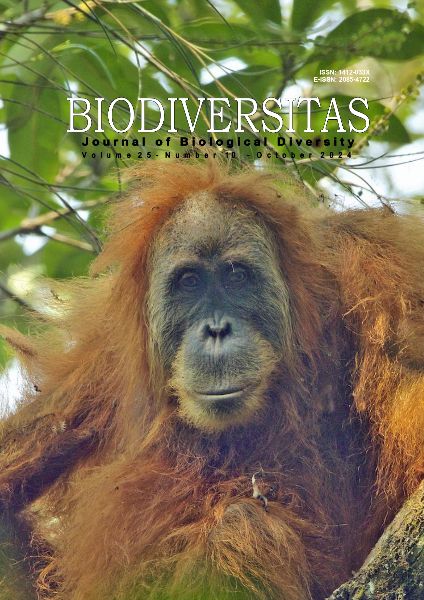Evaluation of growth and yield potential of three varieties of chili pepper (Capsicum frutescens) intercropped with maize (Zea mays) at different planting times
##plugins.themes.bootstrap3.article.main##
Abstract
Abstract. Arta IMSD, Chozin MA, Ritonga AW. 2024. Evaluation of growth and yield potential of three varieties of chili pepper (Capsicum frutescens) intercropped with maize (Zea mays) at different planting times. Biodiversitas 25: 3985-3994. Chili pepper (Capsicum frutescens L.) is a horticultural crop with high economic value. Land-use change had led to a decrease in the potential chili pepper cultivation area. One way to overcome this problem is to use intercropping, for example by planting chili peppers with maize. The purpose of this study was to determine suitable planting times and varieties for intercropping. This research was conducted with a nested design with two treatment factors. The first factor, cropping treatment, had four levels: control (chili pepper monoculture) and chili peppers planted (intercropped) at 0, 4, and 6 weeks after maize planting (MSJ). The second factor was chili variety: Bonita, Shadiva and Lobita. The sowing, soil preparation, planting, maintenance, and harvesting methods were the same for each treatment. The results of this study indicate that the 0 MSJ cropping treatment significantly increases plant height, particularly for the Shadiva variety. The Bonita variety was most productive in the 4 MSJ cropping treatment. In contrast, the control exhibited a higher incidence of geminivirus (Geminiviridae) at the same planting time. The optimal selection of planting time, in conjunction with the most suitable varieties, can enhance productivity and suppress the spread of plant diseases.

